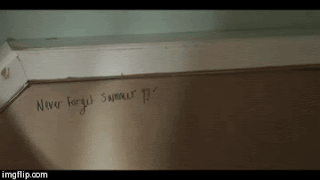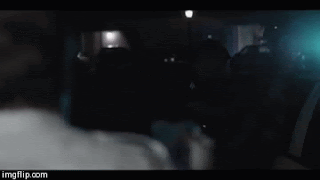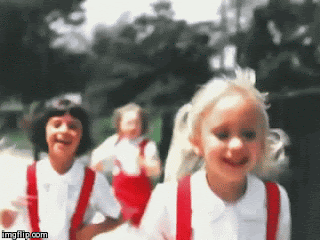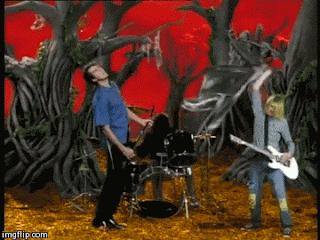Saturday, 27 June 2015
Tuesday, 23 June 2015
Monday, 22 June 2015
Wednesday, 17 June 2015
Preliminary Task- Analysing a Music Video
For our preliminary task, we are required to analyse a music video of a genre similar to that of our chosen song. My group consists of me and Bailey, and the song we have chosen to use for our preliminary task is 'Swingin Party' by Lorde.
Lorde's genre is usually described as indie pop, so I have chosen to analyse a music video for a song by another indie pop artist- 'Ghost' (Room 93 Version) by Halsey.
Camera Shots/Movements/Angles:
Most of the camera shots in this video appear to have been filmed using a handheld camera. The shots have an unstable, wavering quality which makes the video appear more realistic, and increases elements of tension at certain points during the video. Wide shots have been used to give the viewer an idea of the setting of the video- for example, showing a motel sign illuminated in the night lets the audience know where the video is set and during what time of day. This wide shot has been used as an establishing shot. Close up shots have been used a lot in this music video in order to show the facial expressions of the two main characters, which helps to show how they're feeling and to tell their story. Tracking shots are used in this video to create smooth transitions between settings, giving the video a sense of fluidity.
Lorde's genre is usually described as indie pop, so I have chosen to analyse a music video for a song by another indie pop artist- 'Ghost' (Room 93 Version) by Halsey.
Camera Shots/Movements/Angles:
Most of the camera shots in this video appear to have been filmed using a handheld camera. The shots have an unstable, wavering quality which makes the video appear more realistic, and increases elements of tension at certain points during the video. Wide shots have been used to give the viewer an idea of the setting of the video- for example, showing a motel sign illuminated in the night lets the audience know where the video is set and during what time of day. This wide shot has been used as an establishing shot. Close up shots have been used a lot in this music video in order to show the facial expressions of the two main characters, which helps to show how they're feeling and to tell their story. Tracking shots are used in this video to create smooth transitions between settings, giving the video a sense of fluidity.
Editing Transitions:
This video contains conceptual elements- these are short clips within the video showing stationary objects such as a television, a door, and some writing on a wall. The editing is fast paced so that these clips don't distract the audience from the narrative too much, and to keep the audience interested in the storyline. The various clips in this music video change simply via jump cuts- this is how the editor made the video so fast paced. Part of the storyline in this music video shows the female lead having a brief flashback. Two clips have been overlapped here- the first clip that appears on screen is what the character is looking at (the audience realises that this is what causes her to have the flashback). A second clip appears, slightly faded over the first clip- this is the flashback. This editing technique is really effective in creating a part of the storyline that is easy to understand for the audience.
Mise-en-Scene:
The colours shown in this music video are quite subdued and muted- this effect may have been created during the editing process by decreasing the saturation of the video clips. This gives the music video a bleak quality, enhancing the narrative's sombre atmosphere. The lighting is low, which also contributes to the sombre atmosphere and reinforces the idea that this video is set at night.
The clothing worn by the people in this music video appears to be influenced by another era- possibly the 80s and/or 90s. Since trends from these eras such as crop tops, denim jackets, leather jackets and high waisted shorts have made comebacks recently, and the phrase 'Never forget summer 97' is written on a wall in this video, the audience can assume that this video is set in the modern age, despite the old fashioned television and phone shown in the video. The clothing choices in this video might be viewed as unusual and strange- this fits well with the genre of indie pop.
The setting of this video is made clear at the beginning, where a wide establishing shot shows a sign that reads 'Pink Motel'. The storyline of this music video follows on from the artist's previous release 'Hurricane', which ends with a shot of the same sign. Having this shot in both videos emphasises the importance of the location of this music video to the storyline. The motel in which this video is set appears to be fairly run down- the phone and television are relatively old fashioned and the room number '93' is almost peeling off of the door. The setting goes well with the desolate and dreary atmosphere in this video.
Representation
In this music video, the artist is represented as a vulnerable yet tough character. Close-up shots of the artists tattoos have been included in this video, and since tattoos are often painful, they are associated with being strong. Focusing on the artist's tattoos means that the audience is given the impression that the artist is a strong person. The artist is also shown arguing with and then slapping the male lead in the video. The man does not retaliate, showing that the woman (the artist) is dominant and powerful. A High Angle shot is used as the man reacts to the slap- this filming technique reinforces the idea that the female lead in this music video is dominant. On the other hand, at the end of the video, the representation of the artist changes dramatically. The artist is shown swallowing a handful of pills, then later being removed from the motel room on a stretcher. Low Key lighting has been used for these shots to symbolise that something more powerful than the artist has taken control of her actions. This emphasises the idea that the artist is represented as vulnerable at the end of the video.
Genre of the music and how this is signified in the video
As mentioned previously, the genre of the music is indie pop. I think that the low saturation and muted quality of the colours in the video are indicative of the genre of music, as this is a common feature in alternative pop videos. The main characters in the video are young adults, and as Indie Pop is quite a modern and newly popular genre of music, the age of the characters in the video reflects this.
Intertextuality
There are no clear intertextual references within this music video. This is probably due to the genre being Indie Pop- the association of mainstream media is not a common feature for an Indie Pop music video to have.
Audience Reception
Stuart Hall's Audience Reception Theory demonstrates three ways in which an audience might read a media text. The theory of preferred reading is when the audience reads the text the way the author intended them to. The theory of negotiated reading is when the audience reads the text the way the author intended, but also uses their personal experiences and interests to modify their interpretation. The third theory is the oppositional reading theory, where the readers' social position means that they have an opposing relation to the text. Therefore, they reject the reading.
For Halsey's 'Ghost' video, I think that the theory of preferred reading is the most relevant as there is a clear storyline for the audience to follow, therefore, they view the video the way that the artist intended. The theory of negotiated reading could also be applied to this video as a viewer could use their own positions and experiences to interpret certain elements of the storyline.
Uses & Gratifications- Why might an audience enjoy this video?
The Uses and Gratifications theory suggests that audience members are not passive, but take an active role in integrating media into their lives. It also states that audiences are responsible for choosing certain medias to meet their needs. It focuses on what people choose to do with media rather than the effect that the media has upon them. I think that an audience might watch this video to fulfil entertainment needs, as it has a compelling and gripping storyline.
Can Andrew Goodwin's theory be applied to the video? If so, where?
I think that elements of Andrew Goodwin's theory can be applied to this music video. For example, the video expresses genre characteristics such as a muted and dull colour scheme, and the involvement of both concept and narrative aspects. However, there aren't many clear close-ups of the artist in the video, there are no links between lyrics and visuals, no links between music and visuals, and no intertextual references.
Can Laura Mulvey's theory be applied to the video? If so, where?
Laura Mulvey coined the term 'Male Gaze', and believes that film audiences must view characters from the perspective of a heterosexual male. Her 'gaze' theory is made up of 3 aspects- how men look at women, how women look at themselves and how women look at other women.
The 'Male Gaze' theory states that the camera lingers on the curves of the female body, and the events that happen to her afterwards are largely based upon the male's reaction to this. It also demotes women to the status of objects, and gives the female viewer a secondhand experience of the narrative through identification with the male on screen.
I don't think that Laura Mulvey's theory can be applied to this music video, as the female body is not really focused on.
Are there any Binary Oppositions in the video? If so, where?
Levi Strauss came up with the theory of binary opposites. A protagonist and antagonist, or a hero and villain are typical examples of binary opposites. In this music video, it could be argued that the male lead is the antagonist, and the female lead is the protagonist. This is backed up by the arrest of the male lead at the end of the video, and the vulnerable and fragile state of the female lead at the end of the video. The two characters are seen arguing throughout the narrative, so despite the fact that the female lead swallows the pills herself, it could still be interpreted as the male's fault, making him the antagonist. The male also calls the police who later arrest him, making it even more unclear whether he is an antagonist or not. Overall, I am uncertain whether there are any clear Binary Opposites in this music video, but I think that it could definitely be interpreted as a hero/villain story.
Tuesday, 16 June 2015
Andrew Goodwin's Theory
Do you agree with Andrew Goodwin's comment that music videos demonstrate genre characteristics; stage performances for metal bands, dance routines for pop groups, etc?
I think that Andrew Goodwin's comment that music videos demonstrate genre characteristics can be applied to the majority of music videos in today's market. In my Prezi (shown above) on the 6 elements Goodwin stated an audience should look for within a music video, I wrote about some of the genre characteristics displayed within rock and pop music videos. I used Green Day's 'American Idiot' as an example of a stereotypical rock music video, and Fifth Harmony's 'Worth It' music video as an example of a stereotypical pop music video. While these two videos display clear elements of their respective genres, there are also many music videos that do not follow genre expectations.
An example of this is Paramore's 'Still Into You' music video, which does not comply with the typical genre characteristics of a rock music video. While Paramore are a rock band, the video displays many features that would be found in a stereotypical pop music video. The Mise-en-Scene of the video shows bright colours used for the costumes and settings- atypical to the dark colour scheme which the audience expects from a music video within the rock genre. Another way in which Paramore have challenged genre characteristics is by choosing to show their lead singer lip synching throughout the video, instead of the whole band performing. Lip synching is usually associated with songs in the pop genre, so an audience would probably be surprised when watching this video as it is not what they'd expect.
Many music videos comply with Andrew Goodwin's theory, displaying typical genre characteristics and therefore delivering to the audience what they'd expect from the genre. I have included some examples of these in my Prezi (above).
Foo Fighters' 'Something From Nothing' video is a clear example of a music video displaying genre characteristics. The visuals show the band performing the song in a low lit room, (the lights intensify during the more intense parts of the song) wearing simple, everyday clothing in dark colours. The band are playing instruments associated with the genre of rock- electric guitars, drums, and bass. These elements of the video support the genre of the song, not surprising the audience as it is delivering them what they expect.
Overall, I agree with Goodwin's comment that music videos demonstrate genre characteristics, as I have learned through my research that many music videos support his comment.
Sunday, 14 June 2015
Concept Music Videos Research
Some examples of concept music videos are...
Blink-182- I Miss You
Nirvana- Heart-Shaped Box
Fall Out Boy- American Beauty/American Psycho
Most concept videos contain performance aspects, showing the band or artist lip synching/performing in between the more conceptual shots of the video. This is usually done in order to appeal to the audience more. If the video is too obscure, while it will keep the viewer's attention, it is unlikely to appeal to a more mainstream audience. An example of this is Taylor Swift's 'Style' music video- the artist is featured throughout, and as Taylor Swift is extremely well known, a mainstream audience would feel a sense of familiarity whilst watching this video. In videos such as 'Best of You' by Foo Fighters and 'Heart-Shaped Box' by Nirvana, the artists are featured in the video, but not as prominently. Shots of the bands performing are included in the videos in between conceptual aspects and shots, so the band retain their artistic vision whilst still acknowledging a mainstream audience.
Sometimes artists are not featured at all in conceptual music videos, in order to ensure that the focus is entirely on whatever theme or message the artist is trying to convey. Queen's 'Under Pressure' music video includes clips from the 1900s, showing events such as buildings collapsing and large crowds of people next to unemployment signs. The band used these clips to reflect the lyrics in the song, and were not featured in the video to demonstrate how important the concept of the video was to them. 'American Beauty/American Psycho' by Fall Out Boy is another example of a concept music video where the artist is not featured.
Queen- Under Pressure
Fall Out Boy- American Beauty/American Psycho
Most conceptual music videos contain thematic elements, which are portrayed through the mise-en-scene of the video. Colours, costumes and settings can be used to demonstrate genre and meaning of a music video, and can also help the audience to understand the meaning of a song. An example of using thematic elements in a concept music video is My Chemical Romance's 'I Don't Love You'. The props, costumes and setting are all black, grey or white, as the video has a black and white filter. This helps the audience to get an idea of the tone and mood of the song as the video enhances these things.
My Chemical Romance- I Don't Love You
Monday, 8 June 2015
Narrative Music Videos Research
A narrative music video is a video that has a clear storyline which is easy to follow. While many narrative videos contain lip synching, they lack the presence of microphones, instruments, and an audience, which makes them easily distinguishable from Performance music videos.
Some examples of narrative music videos are...
The All-American Rejects- Gives You Hell
Green Day- Wake Me Up When September Ends
Ed Sheeran- Give Me Love
Narrative music videos can vary between telling a story that reflects the lyrics and genre of the song, to surprising the audience by depicting a storyline that appears to be irrelevant to the lyrics.
Sometimes, the artist is featured in the music video as themselves, and the video includes lip synching. Other times, the artist plays a character in the video (for example, The All-American Rejects 'Gives You Hell' video where the lead singer plays two characters), or the artist is not in the video at all (for example, Royal Blood's 'Figure It Out' video).
Some examples of narrative music videos are...
The All-American Rejects- Gives You Hell
Green Day- Wake Me Up When September Ends
Sometimes, the artist is featured in the music video as themselves, and the video includes lip synching. Other times, the artist plays a character in the video (for example, The All-American Rejects 'Gives You Hell' video where the lead singer plays two characters), or the artist is not in the video at all (for example, Royal Blood's 'Figure It Out' video).
The All-American Rejects- Gives You Hell
Royal Blood- Figure It Out
Many narrative music videos contain performance elements or clips of the artist/band lip synching. An example of this is in Green Day's 'Wake Me Up When September Ends', where scenes of the band performing are included in between narrative shots.This contrasts with Ed Sheeran's 'Give Me Love' music video, where the narrative is the sole focus of the video, and the artist is only on screen very briefly, and is not lip synching.
Green Day- Wake Me Up When September Ends
Ed Sheeran- Give Me Love
Narrative music videos often use flash forward shots at the beginning of the video in order to capture the viewer's attention and make them want to continue watching. For example, at the beginning of Taylor Swift's 'I Knew You Were Trouble' music video, the artist is lying in a deserted festival ground. Short flashback clips appear on screen in bursts, keeping the audience's interest in the video, and making them want to keep watching to find out how the artist ended up alone in the deserted festival ground. The same technique is used in Ed Sheeran's 'Give Me Love' music video- it opens showing an a dead angel, clearly shot by an arrow. The audience would want to keep watching the video in order to find out how the angel died.
Ed Sheeran- Give Me Love
Narrative music videos often use flash forward shots at the beginning of the video in order to capture the viewer's attention and make them want to continue watching. For example, at the beginning of Taylor Swift's 'I Knew You Were Trouble' music video, the artist is lying in a deserted festival ground. Short flashback clips appear on screen in bursts, keeping the audience's interest in the video, and making them want to keep watching to find out how the artist ended up alone in the deserted festival ground. The same technique is used in Ed Sheeran's 'Give Me Love' music video- it opens showing an a dead angel, clearly shot by an arrow. The audience would want to keep watching the video in order to find out how the angel died.
Taylor Swift- I Knew You Were Trouble
Ed Sheeran- Give Me Love
Wednesday, 3 June 2015
Performance Music Videos Research
A performance music video is a particular style of music video, showing the band/artist performing the song and lip synching the lyrics. Performance videos contain
lots of close-up shots of the performers (and if applicable, their instruments), and lead performers sometimes have a direct mode of address towards the camera in order to engage the audience.
Some examples of Performance music videos are...
Tonight Alive- The Ocean
Against The Current- Paralysed
Red Hot Chilli Peppers- The Adventures of Rain Dance Maggie
Often in live performance videos, shots of the audience or of the performer interacting with the audience are included in order to give the video a more realistic feel to it and to make the audience feel more involved.
Some examples of Performance music videos are...
Tonight Alive- The Ocean
Against The Current- Paralysed
Red Hot Chilli Peppers- The Adventures of Rain Dance Maggie
Tonight Alive- The Ocean
Red Hot Chilli Peppers- The Adventures of Rain Dance Maggie
Performance music videos use close up shots to show the iconography of the video, which allows the viewer to work out what genre the song/video belongs to. The instruments (electric guitar and drums) and clothing styles (dark, mostly black clothes) in 'Paralysed' by Against The Current are typically associated with rock music, whilst the bright lights in the setting hint that there are elements of pop within the song, as the sets for pop videos are usually fairly bright.
Close up shots have also been used in this video as the lead singer gives a direct mode of address. As she sings, she looks into the camera, which instantly makes the audience feel more connected with the video and, therefore, the artist.
In live performance videos, behind the scenes shots are often included to give the audience an insight into the life of the artist, and to give them a more personal, relatable feel. The following shots are taken from Tonight Alive's 'The Ocean' music video, and show the members of the band messing around backstage before/after gigs- these have been included for the aforementioned reasons.
Shots of artists lip synching in unusual or interesting locations are another key element of performance music videos. Some examples of these are 'The Adventures of Rain Dance Maggie' by the Red Hot Chilli Peppers, where the band are playing on a roof, and 'The Best Thing' by We Are The In Crowd, where the band are playing in a desert. Interesting locations are used for entertainment value and to make the video more memorable.
Subscribe to:
Comments (Atom)

















































